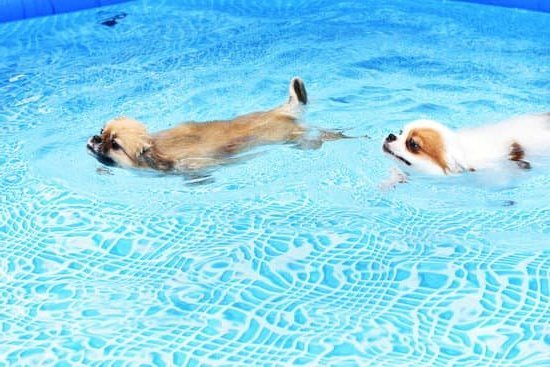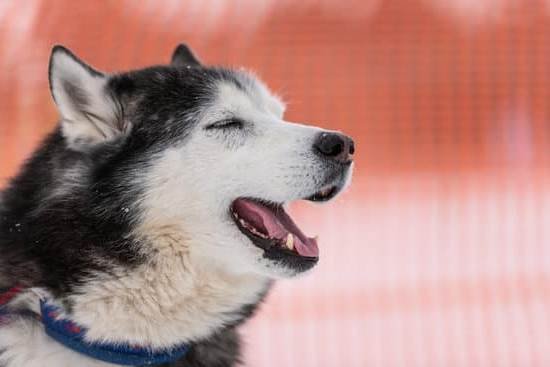Are you wondering how to clicker train your dog to come? Clicker training is a positive reinforcement method that can be highly effective in teaching your furry friend new behaviors, including coming when called. This article will guide you through the process, from understanding the basics of clicker training to troubleshooting tips for overcoming challenges.
Clicker training involves using a small handheld device that makes a distinct clicking sound, paired with treats or rewards, to communicate to your dog when they have performed the desired behavior. It’s an effective and humane way to train your pet and can help strengthen the bond between you and your dog.
Teaching your dog to come on command is not only convenient but also essential for their safety. Whether it’s in a crowded park or near a busy road, having your dog reliably respond to the “come” cue could potentially save their life. In this article, we’ll explore the importance of teaching your dog to come when called and provide you with step-by-step guidance on clicker training them to do so.
Understanding the Basics of Clicker Training
Clicker training is a positive reinforcement method that uses a clicker, a small plastic device that makes a clicking sound when pressed, to mark desirable behaviors in dogs. This type of training has been proven to be effective in teaching dogs various commands and behaviors, including the vital command of coming when called. Understanding the fundamentals of clicker training is essential for successfully training your dog to come on command.
The Basics of Clicker Training
The first step in understanding clicker training is knowing how it works. When your dog performs a desired behavior, such as coming when called, you immediately click the clicker to mark the behavior. The sound of the click tells your dog that they have done something right and that a reward is forthcoming. This clear communication helps your dog associate specific actions with positive consequences.
The Science Behind Clicker Training
Clicker training works based on the principles of classical and operant conditioning. The clicking sound becomes a conditioned reinforcer, signaling to your dog that they are about to receive a reward for their action. Over time, this association strengthens the desired behavior, making it more likely for your dog to repeat it in the future. Understanding these psychological aspects of clicker training can help you use this method effectively when teaching your dog to come on command.
The Importance of Teaching Your Dog to Come on Command
Teaching your dog to come on command is one of the most important skills you can teach them. It is not only a matter of convenience, but also a matter of safety. Whether it’s in the park, at home, or in an emergency situation, having a reliable recall command could save your dog from danger. In addition, having a solid recall can help build trust and strengthen the bond between you and your furry friend.
Dogs are naturally curious and easily distracted animals, which makes recall training crucial for their safety. Without a reliable recall, they may run off and get into dangerous situations such as running into traffic or getting lost. By teaching your dog to come when called, you are giving them the skills they need to stay safe and secure while also giving yourself peace of mind that they will respond when needed.
Moreover, having a strong recall with your dog allows for more freedom and enjoyment during outdoor activities. It enables them to explore new places like hiking trails or off-leash parks without the risk of them wandering away or getting into trouble.
A well-trained recall also means that you can have more control over their behavior in social situations with other dogs and people. By understanding the significance of teaching your dog to come on command, you are taking an important step towards their safety and happiness.
Steps to Prepare for Clicker Training Your Dog to Come
Before you start clicker training your dog to come, there are several important steps you need to take to prepare for the training process. The first step is to ensure that your dog is familiar with the clicker and understands that the sound of the clicker signifies a reward.
You can do this by simply clicking the clicker and then immediately giving your dog a treat. Repeat this process several times until your dog associates the clicking sound with receiving a reward.
The next step is to find a suitable location for training. It’s important to choose a quiet and distraction-free environment where you can fully focus on teaching your dog to come when called. This will help minimize any potential obstacles or interruptions during the training session, allowing both you and your dog to concentrate better.
Another crucial step in preparing for clicker training your dog to come is ensuring that you have high-value treats or rewards on hand. These treats should be especially tempting for your dog and reserved exclusively for training sessions. Examples of high-value treats include small pieces of cooked chicken, cheese, or freeze-dried liver. Having these treats readily available will motivate your dog to respond positively during the training process.
| Steps | Description |
|---|---|
| Familiarize Dog with Clicker | Click the clicker and immediately give your dog a treat several times until they associate the clicking sound with receiving a reward. |
| Choose Suitable Location | Select a quiet and distraction-free environment for training sessions. |
| High-Value Treats | Ensure you have tempting treats such as cooked chicken, cheese, or freeze-dried liver on hand specifically for training purposes. |
Choosing the Right Treats and Rewards for Clicker Training
For clicker training to be effective, choosing the right treats and rewards is crucial. Dogs are motivated by food, so selecting high-value treats is essential for encouraging them to learn and follow commands. Additionally, incorporating other types of rewards such as praise and playtime can also be beneficial in reinforcing good behavior.
Understanding High-Value Treats
High-value treats are those that your dog finds particularly irresistible. These can include small pieces of cooked chicken, cheese, or freeze-dried liver. It’s important to use small, bite-sized treats to prevent overfeeding during training sessions. Experiment with different types of treats to see what your dog responds to best.
Incorporating Variety in Rewards
While food rewards are typically the most effective in clicker training, it’s also important to vary the types of rewards you offer. Verbal praise, petting, and playtime can be just as rewarding for some dogs as food. By incorporating a variety of rewards, you can keep your dog engaged and motivated during training sessions.
By choosing the right treats and rewards for clicker training, you can effectively motivate your dog to come on command. Keep in mind that every dog is different, so it may take some experimentation to find the perfect reward that encourages your furry friend to respond consistently.
Step-by-Step Guide on How to Use the Clicker to Train Your Dog to Come
Clicker training is a positive reinforcement method that can be used to teach your dog various commands and behaviors, including coming when called. Here is a step-by-step guide on how to use the clicker to train your dog to come:
1. Start in a quiet, low-distraction environment: Begin the training in a quiet and familiar place, such as your backyard or living room. This will help your dog focus on the training without being overly stimulated by external factors.
2. Equip yourself with treats and a clicker: Ensure that you have a generous amount of small, soft treats that your dog loves. Additionally, have a clicker handy to mark the precise moment when your dog performs the desired behavior.
3. Call your dog’s name and use the command “come”: When your dog is not distracted, call its name followed by the command “come” in an enthusiastic tone. Hold out a treat to encourage your dog to come towards you.
4. Click and treat when your dog comes: As soon as your dog starts moving towards you after hearing the command, click the clicker at the exact moment it begins coming and immediately give it a treat once it reaches you.
5. Gradually increase distance and distractions: Once your dog consistently responds to coming when called in a low-distraction environment, gradually add distance between you and your dog as well as introduce mild distractions like toys or other people. Be sure to continue using the clicker and offering treats for successful responses.
By following these steps consistently and patiently, you can effectively train your dog to come on command using a clicker. Remember to keep training sessions short and positive to ensure that your furry friend enjoys the process while learning this important behavior.
Common Mistakes to Avoid When Clicker Training Your Dog to Come
When clicker training your dog to come, it’s important to be aware of common mistakes that could hinder the effectiveness of the training. By avoiding these mistakes, you can ensure that your dog will learn and respond well to the “come” command.
Some common mistakes to avoid when clicker training your dog to come include:
1. Inconsistent timing: One of the most crucial aspects of clicker training is the timing of the click. If you are inconsistent with the timing of the click when your dog comes to you, it can lead to confusion and slow down their progress. Be sure to click at the exact moment your dog reaches you after being called.
2. Using the clicker as a punishment: The purpose of the clicker is to mark and reinforce positive behavior, not as a tool for punishment. Avoid using the clicker in a negative or punitive manner, as this can create confusion and anxiety for your dog.
3. Skipping steps in training: Clicker training requires patience and consistency. Skipping steps in the training process can lead to confusion and frustration for both you and your dog. Be sure to follow each step in the training process gradually, allowing your dog to understand and build upon each command before moving on to more advanced exercises.
By being mindful of these common mistakes and taking proactive steps to avoid them, you can set your dog up for success in learning how to come when called through clicker training.
Troubleshooting Tips for Overcoming Challenges in Clicker Training Your Dog to Come
While clicker training your dog to come can be an effective method, it may come with its own set of challenges. One common challenge that dog owners face is when their dogs become easily distracted during training sessions. To overcome this, it’s important to start in a quiet and familiar environment before gradually introducing distractions. This will help your dog focus on the command and the clicker.
Another challenge is when your dog does not respond to the clicker or the command. In such cases, it’s important to reassess the reward being used. Choosing high-value treats and rewards that your dog truly loves can make a significant difference in their responsiveness during training sessions. Additionally, ensure that you are using the clicker consistently and timing it correctly with the desired behavior to avoid confusion.
Additionally, some dogs may exhibit avoidance behaviors or fear towards the clicker itself. If this is the case, it’s essential to desensitize your dog to the sound of the clicker by associating it with positive experiences and rewards.
This can be done by clicking the device and immediately offering a treat, gradually increasing the distance between clicks and treats as your dog becomes more comfortable with the sound. Remember to be patient and understanding as you work through these challenges in clicker training your dog to come on command.
Practice Exercises to Reinforce Your Dog’s Coming When Called
Once your dog has grasped the concept of coming when called through clicker training, it’s essential to reinforce this behavior through practice exercises. Consistent practice will help solidify the command and ensure that your dog responds reliably in various situations. Here are some practice exercises to help reinforce your dog’s coming when called.
Start by practicing the recall command in a familiar and distraction-free environment, such as your home or a quiet backyard. Use the clicker and treats to reward your dog for coming to you promptly when called. Gradually increase the level of distraction by practicing in different locations with more stimuli, such as a park or other public spaces.
Another effective practice exercise is to incorporate games into the training process. For example, play hide and seek with your dog by having someone hold onto them while you go hide. Call your dog’s name and use the recall command, rewarding them with treats and praise when they find you. This game not only reinforces the recall command but also makes training fun and engaging for your dog.
Additionally, consider enrolling in group obedience classes or scheduling playdates with other dogs to provide opportunities for real-life practice in a controlled setting. These interactions can help improve your dog’s response to the recall command amidst distractions and around unfamiliar dogs, ultimately strengthening their coming-when-called behavior through positive reinforcement.
Advanced Tips for Refining Your Dog’s Coming When Called Through Clicker Training
In conclusion, clicker training is a powerful tool for teaching your dog to come when called. By understanding the basics of clicker training and the importance of the “come” command, you can effectively prepare for and execute clicker training with your dog. Choosing the right treats and rewards, as well as following a step-by-step guide, will help you successfully train your dog to come using a clicker.
It’s important to be aware of common mistakes to avoid when clicker training your dog to come, as well as troubleshooting tips for overcoming challenges that may arise during the training process. By practicing exercises to reinforce your dog’s response to the “come” command, you can ensure that their behavior becomes reliable and consistent. Additionally, advanced tips for refining your dog’s coming when called through clicker training can further enhance their response and strengthen their obedience.
Overall, with patience, consistency, and positive reinforcement, clicker training can be an effective method for teaching your dog to come when called. Remember to celebrate progress and always maintain a positive attitude during training sessions. With dedication and commitment, you can achieve success in refining your dog’s response to the “come” command through clicker training.
Frequently Asked Questions
How Do You Teach a Dog to Come With a Clicker?
Teaching a dog to come with a clicker involves using positive reinforcement. Start by associating the sound of the clicker with a reward, such as a treat or praise. Then, use the clicker when the dog comes to you on its own.
Gradually add distance and distractions while continuing to use the clicker and rewarding the desired behavior. Consistency and patience are key when using this method.
How Do You Command a Dog to Come?
Commanding a dog to come involves using a clear and consistent verbal cue, such as “Come” or “Here.” It’s important to use positive reinforcement when the dog responds to the command, whether it’s with treats, praise, or play.
Avoid using negative reinforcement or punishment when teaching this command, as it should be associated with a positive experience for the dog.
Is It Too Late to Train a Dog With a Clicker?
It’s never too late to train a dog with a clicker if done properly. Dogs of any age can learn new behaviors through positive reinforcement and consistency. However, older dogs may take longer to learn new commands compared to puppies or younger dogs.
The key is to be patient, use high-value rewards, and make training sessions short and enjoyable for the dog. With patience and dedication, even older dogs can successfully be trained with a clicker.

Welcome to the blog! I am a professional dog trainer and have been working with dogs for many years. In this blog, I will be discussing various topics related to dog training, including tips, tricks, and advice. I hope you find this information helpful and informative. Thanks for reading!





